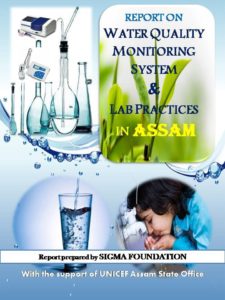Water Quality Monitoring System and Lab Practices
Contributed By: Dr. M.N. Roy, Dr. Debasri Mukherjee, Er. Sohini Tarafdar, Mr. Rajarshi BanerjeeAccess to safe drinking water is critical for human wellbeing. SDG Goals provides for ensuring safe drinking water to be piped to all premises. So, ensuring water quality is an important need and the NRDWP Guideline has also given due priority on Water Quality Monitoring and Surveillance (WQMS). Quality of water is a serious public health concern in Assam. Out of 27 districts of the State at least 15 districts are affected by arsenic and 14 districts are affected by fluoride and iron is present in drinking water in almost all districts. Assam Public Health Engineering Department (APHED) is in the process of improving access to safe drinking water and wanted to have a quick study on the status of WQMS in the State. APHED sought support of UNICEF to get the study conducted, which entered into a partnership with SIGMA Foundation to make a quick study of the status of WQMS and to also recommend ways of improving the same. The study had to be completed within one month; therefore, a process of rapid assessment was undertaken through quick field study including visit to the labs, interaction with key officials including conducting a brainstorming workshop at the State level in the gracious presence of Chief Secretary, Assam, Additional Chief Secretary, Assam and Secretary, APHED and other eminent experts. The study team visited the Stare Referral Laboratory (SRL) of Assam which is located in Betkuchi, Guwahati and three district level laboratories (DLL) at Morigaon, Kamrup (rural) and Jorhat in the month of November and December in 2017. The entire process was totally based on assessment of efficiency to perform the GOI protocol at the laboratory level. A thorough follow up action and concrete recommendation was made to fulfil the SDG by 2030.

